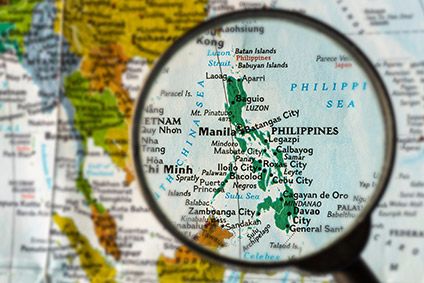
Signs are emerging of an accelerating relocation of garment investment from China to the Philippines, amidst the US imposing an additional 10% duty on textile and some clothing products from China.
The Chinese government retaliation of an additional 25% duty on US cotton imports makes raw material sourcing for China-based manufacturers more expensive – and has also raised the cost of doing business in China.

Discover B2B Marketing That Performs
Combine business intelligence and editorial excellence to reach engaged professionals across 36 leading media platforms.
Already faced with growing labour costs and tightening environmental legislation, Chinese clothing and textile manufacturers have been eyeing Southeast Asia for possible relocations, and the Philippines is a key target, says Robert Young, president of the Foreign Buyers Association of the Philippines (FOBAP).
He told just-style: “It is already happening – garment orders to the US from Manila increased 10% this month, and foreign, mostly Chinese, investors are busy shopping for garments factory spaces here.”
He adds: “In terms of apparel, the Philippines’ prices are around 15% higher than China on same product category, but now that China prices are increasing due to labour costs, we believe that the Philippines can penetrate in the basic lines, for which China has tapered production.”
The Philippines daily newspaper, the Manila Standard, echoed these views last month, quoting Confederation of Wearables Exporters of the Philippines (CONWEP) executive director Maritess Agoncillo also saying Chinese garment manufacturers are assessing the current labour market and the taxation policies in the Philippines. These, she, stressed are the two major issues Chinese companies consider when locating out of China.

US Tariffs are shifting - will you react or anticipate?
Don’t let policy changes catch you off guard. Stay proactive with real-time data and expert analysis.
By GlobalDataEven China’s state-owned media is hinting at such a shift. The Global Times in early August quoted an unnamed Hong Kong-based garment manufacturer considering opening another factory in either Indonesia or Thailand.
Nevertheless, old buying habits die hard and US importers are unlikely to forgo purchasing garments made in China overnight, despite higher tariffs, says Kishore Chugani, marketing manager at Manila-based Philshirt Uniform.
He says buyers will take time to move sourcing to a different country, such as the Philippines, India, Bangladesh or Pakistan, as “looking for the right partners takes many years of trust.”
Data from China’s Ministry of Commerce on Chinese overseas investment in the textile industry has yet to indicate that the trade war will increase Southeast Asia’s share of this financing – currently at around 55%.
But the ongoing US-China trade war has “definitely had an impact on the transition of production moving outside of China,” according to Nathan Resnick, CEO and founder of San Diego, US-based an automated sourcing platform Sourcify.
“I would say that about 40% of companies that we work with at Sourcify have asked about this,” he told just-style.
This follows longer-term increases in costs pushing buyers to look outside China. “The labour rates in China have consistently been increasing as well, pushing companies to explore more affordable rates elsewhere”, he says, although also accepting “this shift takes time.”
Moreover, according to the Hong Kong Trade Development Centre (HKTDC), relocation of garment and textile manufacturing from China to Association of Southeast Asian Nations (ASEAN) countries, including the Philippines, is attractive because it means they can also tap ASEAN markets and compete against ASEAN manufacturers.
“This is because China has a sophisticated garment and textile sector supply chain and skilled labour when compared to most other ASEAN countries,” HKTDC assistant principal economist (global research) Louis Chan told just-style.
While it would be too early to assess the extent to which the US-China standoff will drive businesses out of China, he says there could be an impact if it drags on.
With additional reporting by Poorna Rodrigo.





